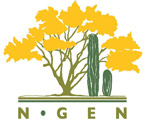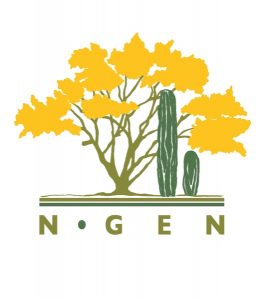
Title: Improving Ecosystem-Based Management Governance
Convener: Alexis Rife
Participants: Daniel Stotle, Maria Espinosa Romero, Jennie Duberstein, Carol Bender Seth Munson, Sue Rutman, Rodrigo Medellin, Xavier Lopez Medellin, Mike Wilken, Arturo Ramírez Valdez, Carlos Figueroa, Ivone Giffard Mena, Helen Ingram Tram Nguyen, Eugene Carlos Cardenas, Danielle Carter Juan C. Alvarez, Natalia Martinez Tagüeña, Rafael Routson, Jacob Franco A., Lucero Radonic, Hector Perez Prig, Marin Robledo Mejía, Rodrigo Renteria
Keywords: communication, governance, role of scientist, community involvement, ecosystem-based management
Discussion:
Ecosystem-based management has been growing in popularity in recent years as the most effective way to manage habitats, resources, and human interactions within the ecosystem. Protected areas, in particular, are seen as an important tool in ecosystem-based management, although they are not the only way.
Our discussion generally focused on two broad themes and questions:
1. What is the role of the scientist?
2. How can we approach ecosystem-based management efforts in order to ensure that all are involved and it is done both fairly and effectively?
Key, take-away messages:
~ Most examples of success in EBM have happened at a local, small-scale.
Nevertheless, it is important to consider (and match) the scale of the ecosystem to the scale of the governance system.
o Create a network of small-scale examples and allow cross-pollination to occur.
~ Ecosystem-based management is a long-term investment. It requires time, patience, extensive knowledge, trust of the local community, involvement of all the players.
~ What we want is the good management of natural resources with an involved community.
o Most often this is done around common-pool resources. We need viable sustainable networks via an interdisciplinary process – ecological science, social science, and community involvement.
~ It is critical to ensure that all players (users/stakeholders/interested parties) are involved in the ecosystem-based management process. If everyone who should be there is there, you should not be comfortable. Keep communication paths open.
~ Scientists must involve themselves in political practices and the bureaucracy.
It is our role to practice good science, and to then utilize that strong base as a way to inform/suggest/advise government. Our experiences can be used to train government/decision-makers in best practices.
~ We must consider the human context and community. This includes acknowledging the local system, local ecological knowledge,
~ It is important to consider the failures of management and learn from them, as much (if not more) than our successes.
Examples of ecosystem-based management mentioned/discussed:
Malpais in SE Arizona. Group of ranchers purchased government land and meet to discuss management – controlled burns, rotation, etc. They actually work together and “get stuff done”. The Nature Conservancy is also involved.
Incorporated science in the management of a large area. Characteristics (factors of success?): remote area, low tourism. little outside interference. people are similar – goals, lifestyles, culture. have clearly prioritized their goals.
Laguna de San Ignacio. Small community with eco-tourism of grey whales. Pristine environment. But conflict does exist.
Islas del Golfo
Cabo Pulmo
Isla Natividad. Fisher cooperatives asked permission from the government to manage the zone near their community, rather than the government system of managing individual species. Works under the government system because the government puts a total allowable catch for commercial species and then the community decides how much of each and on temporal/spatial closures. Cooperation with NGOs and academics.
Vancouver Island. All stakeholders defined together a set of objectives at the beginning of the ecosystem-based management process. Then, all subsequent decisions MUST fall within those objectives.
Sonoran Desert Conservation Plan. Large(r), regional example.
Kino Bay. Project on marine debris involves kids/young adults in caring for their environment
Watershed Management. Large-scale that matches governance-scale to ecosystem-scale.
Community Involvement:
It is important to take into consideration how convinced and involved the community is.
Science communication and the role of the scientist:
Researchers need to take a stand. We don’t want to be advocates (should not be), but how do we communicate the need for better management most effectively? How can we push a sense of urgency to government/decision-/policy-makers? If scientists do not step up – industry will. One possibility is for scientists to use examples, experiences in the field, their knowledge/research and show the government. We cannot just publish papers, we must actively go, communicate, and participate. Scientists can train government in methods that work and be involved in the creation of policy. We must overcome our fear of government and the bureaucracy in order to improve/advance in conservation goals.
Science communication is a critical aspect of this. Think about your message, the tools of conservation/management, consider your target audience. Scientists must learn basic communication skills. Utilize science-writers and educators.
Other concerns:
Grass-roots and local systems being rejected by scientists who “know better”. It is important to know the community/environment/context within which you work.
Failures in governance are often related to: time restrictions/constraints; not including the right people; issues of trust; actions in the field; working within the context; managing of expectations.
Other questions to consider:
How do scientists give “advice”?
Whose voices are being heard?
How to measure success? What is the role of NGOs?


